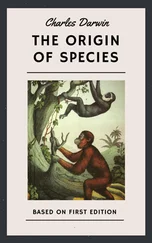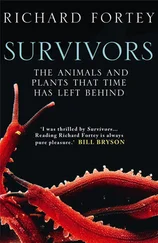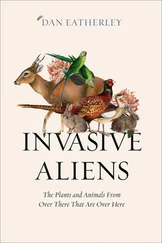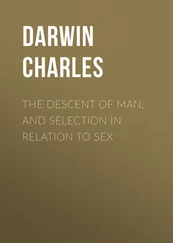Charles Darwin - The Variation of Animals and Plants under Domestication — Volume 1
Здесь есть возможность читать онлайн «Charles Darwin - The Variation of Animals and Plants under Domestication — Volume 1» — ознакомительный отрывок электронной книги совершенно бесплатно, а после прочтения отрывка купить полную версию. В некоторых случаях можно слушать аудио, скачать через торрент в формате fb2 и присутствует краткое содержание. Жанр: foreign_antique, foreign_prose, на английском языке. Описание произведения, (предисловие) а так же отзывы посетителей доступны на портале библиотеки ЛибКат.
- Название:The Variation of Animals and Plants under Domestication — Volume 1
- Автор:
- Жанр:
- Год:неизвестен
- ISBN:нет данных
- Рейтинг книги:5 / 5. Голосов: 1
-
Избранное:Добавить в избранное
- Отзывы:
-
Ваша оценка:
- 100
- 1
- 2
- 3
- 4
- 5
The Variation of Animals and Plants under Domestication — Volume 1: краткое содержание, описание и аннотация
Предлагаем к чтению аннотацию, описание, краткое содержание или предисловие (зависит от того, что написал сам автор книги «The Variation of Animals and Plants under Domestication — Volume 1»). Если вы не нашли необходимую информацию о книге — напишите в комментариях, мы постараемся отыскать её.
The Variation of Animals and Plants under Domestication — Volume 1 — читать онлайн ознакомительный отрывок
Ниже представлен текст книги, разбитый по страницам. Система сохранения места последней прочитанной страницы, позволяет с удобством читать онлайн бесплатно книгу «The Variation of Animals and Plants under Domestication — Volume 1», без необходимости каждый раз заново искать на чём Вы остановились. Поставьте закладку, и сможете в любой момент перейти на страницу, на которой закончили чтение.
Интервал:
Закладка:
The arguments opposed to the theory of Natural Selection, have been discussed in my 'Origin of Species,' as far as the size of that work permitted, under the following heads: the difficulty in understanding how very simple organs have been converted by small and graduated steps into highly perfect and complex organs; the marvellous facts of Instinct; the whole question of Hybridity; and, lastly, the absence in our known geological formations of innumerable links connecting all allied species. Although some of these difficulties are of great weight, we shall see that many of them are explicable on the theory of natural selection, and are otherwise inexplicable.
In scientific investigations it is permitted to invent any hypothesis, and if it explains various large and independent classes of facts it rises to the rank of a well-grounded theory. The undulations of the ether and even its existence are hypothetical, yet every one now admits the undulatory theory of light. The principle of natural selection may be looked at as a mere hypothesis, but rendered in some degree probable by what we positively know of the variability of organic beings in a state of nature, — by what we positively know of the struggle for existence, and the consequent almost inevitable preservation of favourable variations, — and from the analogical formation of domestic races. Now this hypothesis may be tested, — and this seems to me the only fair and legitimate manner of considering the whole question, — by trying whether it explains several large and independent classes of facts; such as the geological succession of organic beings, their distribution in past and present times, and their mutual affinities and homologies. If the principle of natural selection does explain these and other large bodies of facts, it ought to be received. On the ordinary view of each species having been independently created, we gain no scientific explanation of any one of these facts. We can only say that it has so pleased the Creator to command that the past and present inhabitants of the world should appear in a certain order and in certain areas; that He has impressed on them the most extraordinary resemblances, and has classed them in groups subordinate to groups. But by such statements we gain no new knowledge; we do not connect together facts and laws; we explain nothing.
It was the consideration of such large groups of facts as these which first led me to take up the present subject. When I visited during the voyage of H.M.S. "Beagle," the Galapagos Archipelago, situated in the Pacific Ocean about 500 miles from South America, I found myself surrounded by peculiar species of birds, reptiles, and plants, existing nowhere else in the world. Yet they nearly all bore an American stamp. In the song of the mocking- thrush, in the harsh cry of the carrion-hawk, in the great candlestick-like opuntias, I clearly perceived the neighbourhood of America, though the islands were separated by so many miles of ocean from the mainland, and differed much in their geological constitution and climate. Still more surprising was the fact that most of the inhabitants of each separate island in this small archipelago were specifically different, though most closely related to each other. The archipelago, with its innumerable craters and bare streams of lava, appeared to be of recent origin; and thus I fancied myself brought near to the very act of creation. I often asked myself how these many peculiar animals and plants had been produced: the simplest answer seemed to be that the inhabitants of the several islands had descended from each other, undergoing modification in the course of their descent; and that all the inhabitants of the archipelago were descended from those of the nearest land, namely America, whence colonists would naturally have been derived. But it long remained to me an inexplicable problem how the necessary degree of modification could have been effected, and it would have thus remained for ever, had I not studied domestic productions, and thus acquired a just idea of the power of Selection. As soon as I had fully realised this idea, I saw, on reading Malthus on Population, that Natural Selection was the inevitable result of the rapid increase of all organic beings; for I was prepared to appreciate the struggle for existence by having long studied the habits of animals.
Before visiting the Galapagos I had collected many animals whilst travelling from north to south on both sides of America, and everywhere, under conditions of life as different as it is possible to conceive, American forms were met with — species replacing species of the same peculiar genera. Thus it was when the Cordilleras were ascended, or the thick tropical forests penetrated, or the fresh waters of America searched. Subsequently I visited other countries, which in all their conditions of life were incomparably more like parts of South America, than the different parts of that continent are to each other; yet in these countries, as in Australia or Southern Africa, the traveller cannot fail to be struck with the entire difference of their productions. Again the reflection was forced on me that community of descent from the early inhabitants of South America would alone explain the wide prevalence of American types throughout that immense area.
To exhume with one's own hands the bones of extinct and gigantic quadrupeds brings the whole question of the succession of species vividly before one's mind; and I found in South America great pieces of tesselated armour exactly like, but on a magnificent scale, that covering the pigmy armadillo; I had found great teeth like those of the living sloth, and bones like those of the cavy. An analogous succession of allied forms had been previously observed in Australia. Here then we see the prevalence, as if by descent, in time as in space, of the same types in the same areas; and in neither the case does the similarity of the conditions by any means seem sufficient to account for the similarity of the forms of life. It is notorious that the fossil remains of closely consecutive formations are closely allied in structure, and we can at once understand the fact if they are closely allied by descent. The succession of the many distinct species of the same genus throughout the long series of geological formations seems to have been unbroken or continuous. New species come in gradually one by one. Ancient and extinct forms of life are often intermediate in character, like the words of a dead language with respect to its several offshoots or living tongues. All these facts seemed to me to point to descent with modification as the means of production of new species.
The innumerable past and present inhabitants of the world are connected together by the most singular and complex affinities, and can be classed in groups under groups, in the same manner as varieties can be classed under species and sub-varieties under varieties, but with much higher grades of difference. These complex affinities and the rules for classification, receive a rational explanation on the theory of descent, combined with the principle of natural selection, which entails divergence of character and the extinction of intermediate forms. How inexplicable is the similar pattern of the hand of a man, the foot of a dog, the wing of a bat, the flipper of a seal, on the doctrine of independent acts of creation! how simply explained on the principle of the natural selection of successive slight variations in the diverging descendants from a single progenitor! So it is with certain parts or organs in the same individual animal or plant, for instance, the jaws and legs of a crab, or the petals, stamens, and pistils of a flower. During the many changes to which in the course of time organic beings have been subjected, certain organs or parts have occasionally become at first of little use and ultimately superfluous; and the retention of such parts in a rudimentary and useless condition is intelligible on the theory of descent. It can be shown that modifications of structure are generally inherited by the offspring at the same age at which each successive variation appeared in the parents; it can further be shown that variations do not commonly supervene at a very early period of embryonic growth, and on these two principles we can understand that most wonderful fact in the whole circuit of natural history, namely, the close similarity of the embryos within the same great class — for instance, those of mammals, birds, reptiles, and fish.
Читать дальшеИнтервал:
Закладка:
Похожие книги на «The Variation of Animals and Plants under Domestication — Volume 1»
Представляем Вашему вниманию похожие книги на «The Variation of Animals and Plants under Domestication — Volume 1» списком для выбора. Мы отобрали схожую по названию и смыслу литературу в надежде предоставить читателям больше вариантов отыскать новые, интересные, ещё непрочитанные произведения.
Обсуждение, отзывы о книге «The Variation of Animals and Plants under Domestication — Volume 1» и просто собственные мнения читателей. Оставьте ваши комментарии, напишите, что Вы думаете о произведении, его смысле или главных героях. Укажите что конкретно понравилось, а что нет, и почему Вы так считаете.












